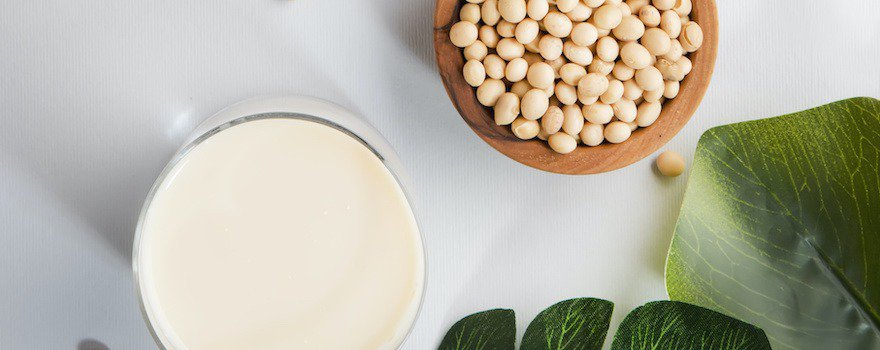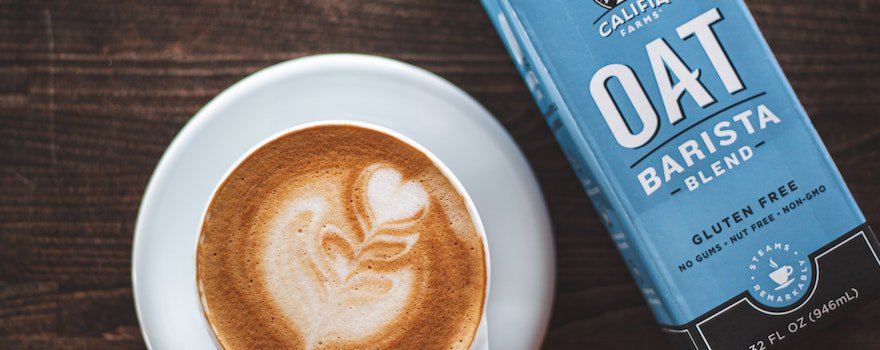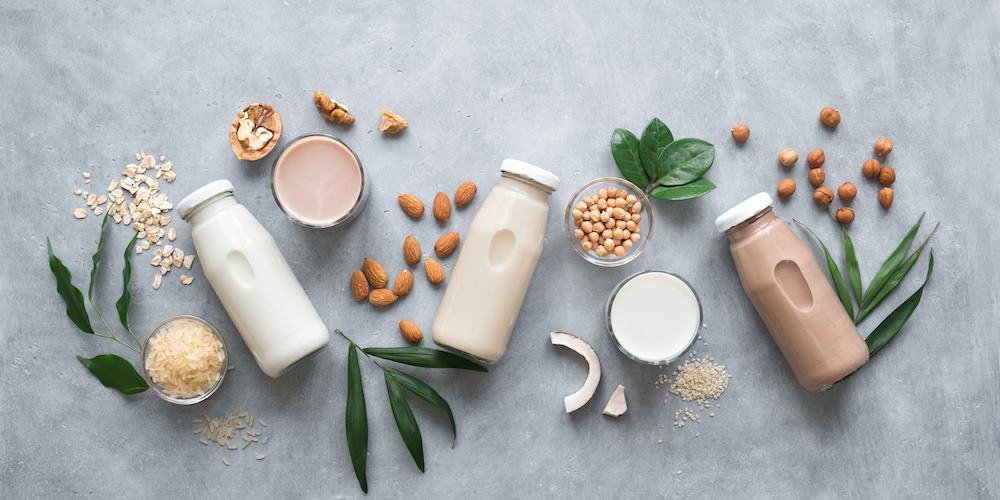Plant milk, or rather plant milks, also known as plant drinks or juices, are consumed by many of us. By vegetarians, vegans, those who are lactose intolerant, or people allergic to milk proteins.
But also by those who wish to reduce their environmental impact.
Plant milk is made from cereals (rice), legumes (soybean) or oilseeds (almond). There is a wide range available today, there is even hemp milk and quinoa milk.
Depending on the recipe, additional ingredients such as sunflower oil, sugar, or calcium can be added. You can also make them yourself.
Here are 4 plant milks, their manufacturing processes, and their benefits. After the list, our advice on choosing the plant milk that best suits your needs.
Precaution: the ANSES reminds that plant-based drinks are not suitable for infants under one year old. They do not have the same nutritional qualities as animal milk. To avoid the risk of confusion, the European Commission does not allow the commercial designation “milk” for these drinks except those made from almonds or coconut.
Soy Milk

Manufacturing: Soy milk is undoubtedly the best-known plant milk! To make it, soak soybeans then remove their skins. Next, grind them, add water, and cook them. Finally, filter the mixture obtained.
Nutritional contributions: The protein content of soy milk is similar to cow’s milk. They are vegetable proteins that contain all essential amino acids. Its fat content is lower. However, there are some contraindications to its consumption (see in the second part of this article).
Recipe ideas: soy milk has a slightly bitter nutty taste. It foams easily and can be used in a café latte. You can use it in waffle and pancake recipes. Also to make flans and desserts. For savory dishes, in a vegetable gratin or an asparagus velouté.
Almond Milk

Manufacturing: Almond milk is made from almonds soaked in water to rehydrate them. They are then blended with water and the resulting preparation is filtered. Commercial almond milks are often enriched with sugars or calcium and other additives.
Nutritional contributions: Natural almond milk is low in calories and contains a small amount of carbohydrates. Its glycemic index is low. It contains vitamin E, an antioxidant that limits cellular and tissue aging. It’s also a source of magnesium.
Recipe ideas: almond milk has a mild and light flavor. You can use it in a cherry or apricot clafoutis recipe. In a cappuccino or hot chocolate as a milk substitute. In a carrot velouté or a sauce to accompany cod.
Rice Milk

Manufacturing: Rice milk is made from rice grains. To make it, grind the grains into semolina, then mix them with water. Heat the mixture and filter it. In Japan, there is a fermented rice drink called amazake.
Nutritional contributions: Rice milk is an alternative to cow’s milk, low in fat and one of the most digestible. It is a plant milk rich in carbohydrates, with a high glycemic index. Rice drinks have a relatively low protein content.
Recipe ideas: its taste is neutral. You can use it in a rice pudding recipe! In cake recipes like madeleines. In a lemongrass sauce with spices to accompany salmon. In a vegetable cake recipe with sun vegetables, peppers, zucchinis, etc.
Oat Milk

Manufacturing: This milk is produced from oats, one of the first cereals domesticated by humans. The first step in its manufacturing is to soak the grains in water. Then, they are blended and the mixture is filtered.
Nutritional benefits: Oat milk is roughly as caloric as cow’s milk. It contains soluble fiber, notably beta-glucans that act on bad cholesterol as highlighted in this study. These fibers also increase the feeling of satiety.
Recipe ideas: Oat milk has a slightly sweet and mild flavor. It can be used in porridge, pancakes, but also in savory dishes like sauces or vegetable purees, or in a pumpkin soup.
How to choose your plant-based milk?
Composition and taste of plant-based milk
Various criteria should be taken into consideration when choosing plant-based drinks.
First, from a nutritional standpoint, we advise against certain plant-based milks for specific groups. For instance:
- Rice milk has a high GI, so diabetics are advised to limit their consumption.
- Soy milk contains substances called isoflavones. It is not recommended for individuals with a personal or family history of hormone-dependent cancers.
Then there’s taste. Soy milk and oat milk have more pronounced flavors compared to almond and rice milks.
Depending on the recipes you plan to make, adapt your choice. For instance, almond milk pairs very well with summer fruits like cherries and apricots.
We check the composition of plant-based drinks by scrutinizing the labels.
Some are enriched with calcium from an algae or vitamins, which can be interesting depending on their absorbability. However, other drinks have long lists of additives (sugars, stabilizers).
To control the composition of your plant-based drink, why not try making it at home?
To recap:
| Soy milk | Almond milk | Rice milk | Oat milk | |
| Nutritional benefits | Complete plant proteins Low in fat | Vitamin E and magnesium Low glycemic index | Low in fat Easy to digest | Soluble fiber |
| Disadvantages | Not recommended: pregnant and breastfeeding women, history of hormone-dependent cancers | Not recommended in case of nut allergies. Low protein content | High glycemic index Low protein content | Not recommended for those intolerant to gluten or with celiac disease Low protein content |
| Taste / recipe ideas | Nutty taste, bitterness Café latte, waffles, pancakes, vegetable gratin, asparagus soup | Almond taste, smoothness Summer fruit clafoutis, cappuccino, hot chocolate, carrot soup, sauce for fish | Rice taste, lightness Rice pudding, cakes, madeleines, lemongrass and spice sauce for fish, vegetable cake | Pronounced taste, mildness Porridges, pancakes, matcha latte, sauces, vegetable purees, pumpkin soup |
The surge in plant-based milk consumption
Today, one in four French people drinks plant-based milk (soy, almond, rice, oat, hazelnut…). A supermarket that offered 10 types of plant-based milk two years ago, now offers about sixty!
The market grew by 10% between 2019 and 2020, (equivalent to 78 million bottles), even though it is twice as expensive as cow’s milk. Its environmental impact is much lower than that of cow’s milk, especially if made from locally grown plants like French soy.



